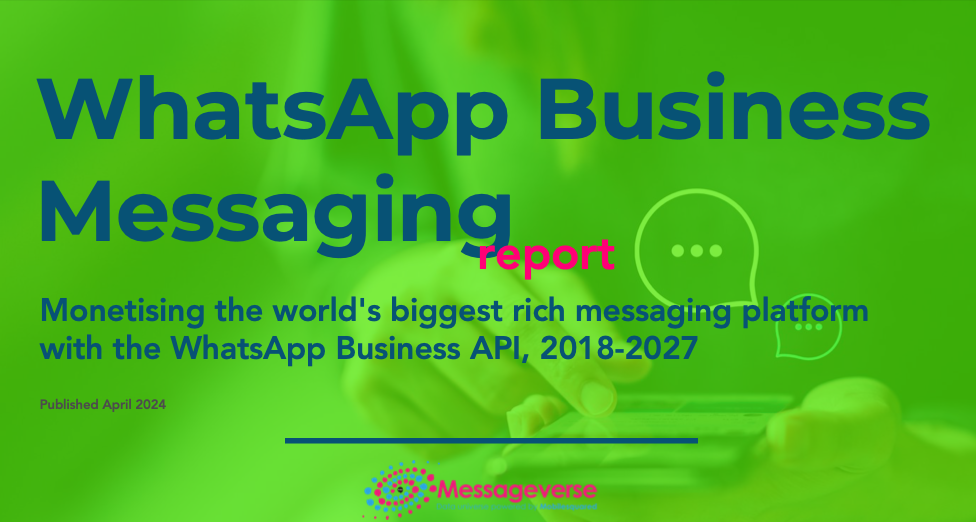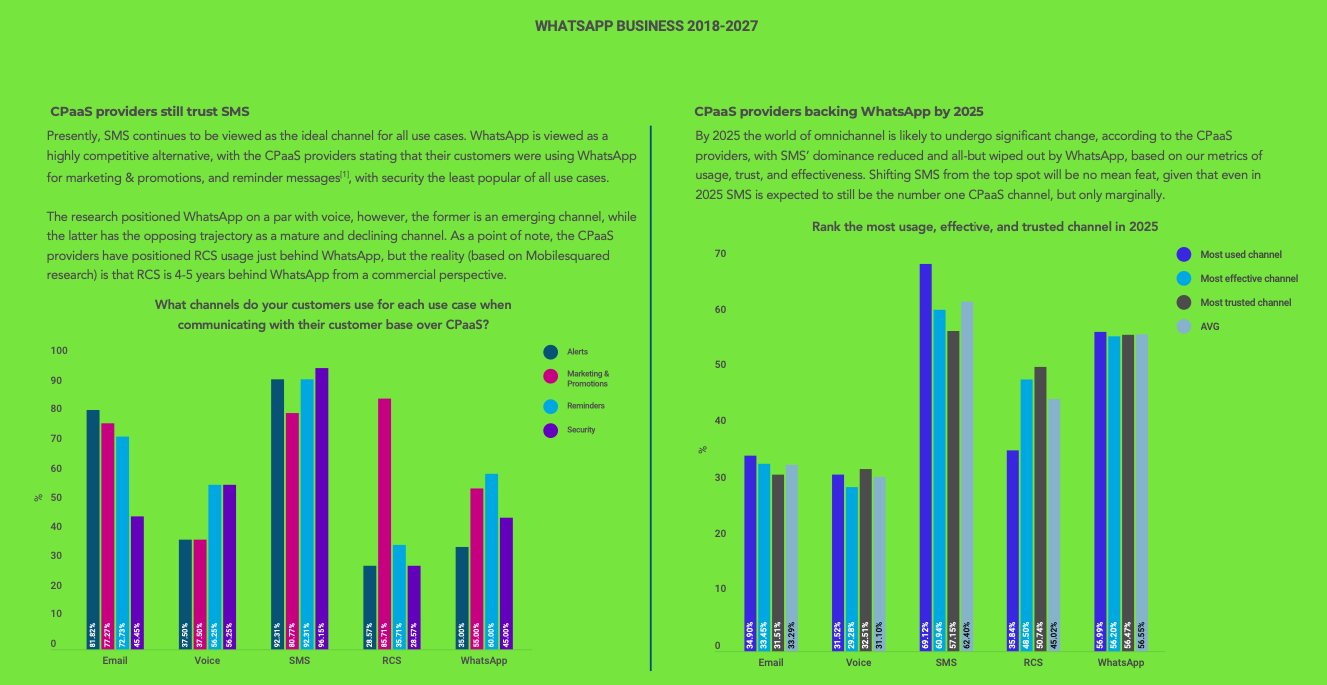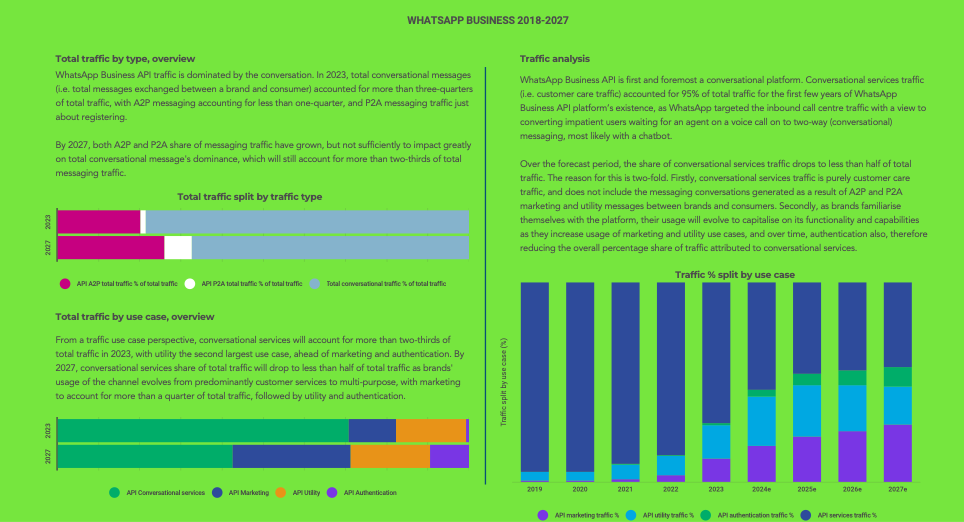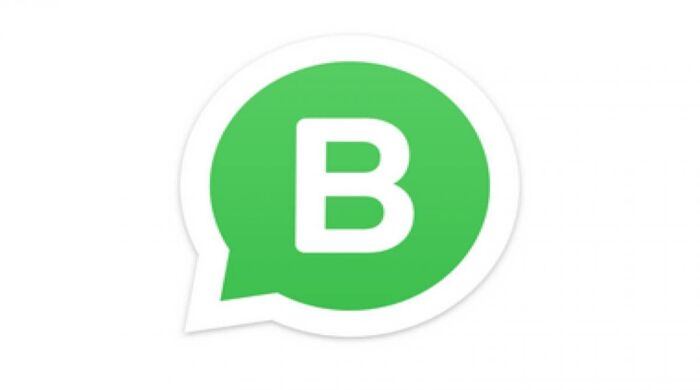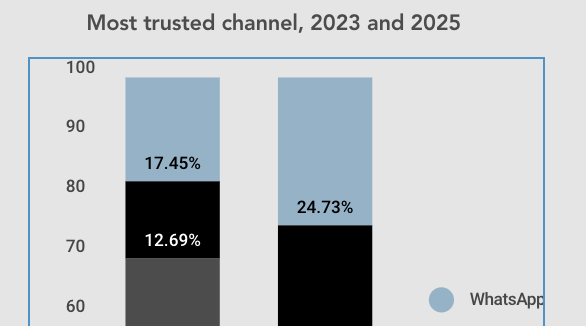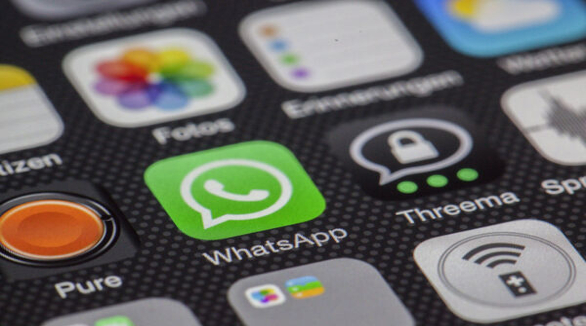WHATSAPP SUBSCRIPTION
(Published April 2024)
With nearly 3 billion users, WhatsApp is the largest rich messaging platform in the world, making it the ideal channel for enterprises and brands to engage with customers. In 2023 enterprise and brand adoption of WhatsApp Business started growing, and this will only accelerate from 2024 onwards.
This subscription provides detailed insight, analysis and forecasts on WhatsApp Business API (serving medium and large brands only), from the #1 global business messaging analyst company. Plus traffic data for WhatsApp Business App, the free service only available to small and micro businesses.
A 12-month subscription costs £4,990 and includes:
- Executive summary
- 70-page interactive analyst report
- 3+ million country-level data points across 200 markets
- Subscriber-only analyst briefings
- Annual data updates
